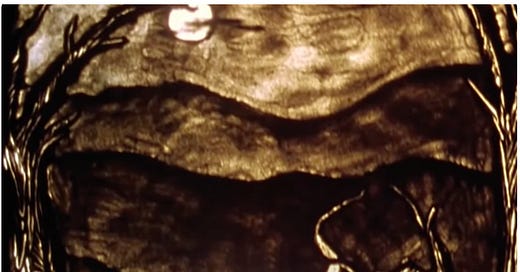"What is Disease X?"
Studying an "unknown" pathogen and developing countermeasures against it.
On January 11, 2024, Forbes published a report titled What Is ‘Disease X’? Right-Wing Circles Slam Hypothetical Pandemic. Though the entire report struck me as bizarre, of particular note is the following, which the author characterizes as a “Key Fact.” I have highlighted in bold the most nutty elements of this “key fact.”
KEY FACTS
Disease X, a hypothetical unknown threat, is the name used among scientists to encourage the development of countermeasures, including vaccines and tests, to deploy in the case of a future outbreak—the WHO convened a group of over 300 scientists in November 2022 to study the “unknown pathogen that could cause a serious international epidemic,” positing a mortality rate 20 times that of Covid-19.
It seems to me that this inaugurates a new epoch of scaremongering. As our Founding Father, James Madison, remarked on a number of occasions, rulers have always invoked threats to public safety in order to extend their power. Reviewing history going back to Roman times, such threats have included:
-Foreign invaders.
-Pirates raiding shipping and coastal settlements.
-Slave revolts.
-Domestic conspirators plotting to overthrow the government.
-Bandits.
-Famine
-Dangerous religious cults.
-The wrath of God.
-Evil spirits, witches, and ghosts.
-Curses upon the land from unknown malevolent actors.
-Wild animals such as wolves and bears.
-Plague.
In the West, fear of the plague is at least as old as the Plague of Athens in 430 BC. After plague struck Venice in the 14th Century, the Republic inaugurated what became the standard procedure of the Quarantine, whereby vessels coming in from foreign places thought to be infected with plague were required to spent 40 days anchored off Lazzaretto island before their crews were allowed to enter the city to offload their cargo. The word “quarantine” derives from the Italian word for the number forty—that is, “quaranta.”
In reviewing the above threats, consider that even supernatural beings such as witches and ghosts were “known” in the folkloric sense of being given names and backstories. The 17th Century witch hysteria in Europe and Massachusetts Bay Colony involved identifying particular women and accusing them of practicing witchcraft. In literature, Hamlet sees the ghost of his father. In The Legend of Sleepy Hollow, the Headless Horseman is thought to be the restless spirit of a Hessian soldier who was decapitated by a cannon ball.
Now, in the year 2024, we are being regaled in the press and at the World Economic Forum’s annual meeting in Davos with stories of Disease X—”an unknown, hypothetical threat.”
Although the threat is unknown and hypothetical, the WHO has convened 300 scientists to study it and develop countermeasures against it. Finally, though this hypothetical pathogen remains unknown, “it could cause a serious international pandemic with a mortality rate 20 times that of COVID-19.”
At this point, any sane person may be asking the following:
1). If a pathogen is hypothetical and unknown, how can it be the subject of a public health warning?
2). How can an unknown thing be studied, and how can scientists develop countermeasures against it?
3). Without knowing what the pathogen is, how can one posit that it has a mortality rate 20 times that of COVID-19?
The only thing I can think of in all of literature that resembles Disease X is the Erlkönig (Erlking)—a ballad written by Johann Wolfgang von Goethe about a supernatural spirit (Elf King) that appears to boy as he riding horseback with his father across the countryside at night, trying to get home to their farmhouse. Only the child can see the Erlking, who is coming to get him and take him away.
The father is confident the boy is just seeing things, and reassure him that it’s just the wind rustling in the willows or a sliver of fog. At the climactic moment of the poem, the boy cries:
My father, my father, he's touching me now!
The Erl-King has done me harm!
The horrified father rides swiftly rides on,
He holds the moaning child in his arms,
Reaches the farm with great difficulty;
In his arms, the child was dead.
Schubert set Goethe’s poem to music. The following YouTube video presents Schubert’s song with spooky animation.
Just like the Erlking, Disease X is coming for us, even though it remains unknown and unseen to sane adults.






Interesting about the 40 days, the number 40 comes up many, many times in both the Old and New Testament of the Bible
Disease X,
from Planet X,
carried by Racer X,
cured by Chemical X
without which it means our X-tinction
Really Big Pharma & the Great Reset think, X marks the spot.
We are X-pendable.